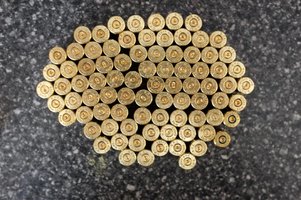Hi,
I've been researching into reloading, gone through the Lyman book, am reading ABCs of reloading, watched a pile of videos, and have started to purchase reloading items.
I had a few questions that I'm hoping people could and answer (or point me to sources to read up on this)...
If, during the seating of the primer, it goes in too far, what do you do?
Discard the primer/case?
Can the primer be safely removed?
If removed should it be discarded?
If you have unspent (but unusable) primers, or cases with primers, how do you safely dispose of them?
Thanks in advance, from a soon to be reloader.
I've been researching into reloading, gone through the Lyman book, am reading ABCs of reloading, watched a pile of videos, and have started to purchase reloading items.
I had a few questions that I'm hoping people could and answer (or point me to sources to read up on this)...
If, during the seating of the primer, it goes in too far, what do you do?
Discard the primer/case?
Can the primer be safely removed?
If removed should it be discarded?
If you have unspent (but unusable) primers, or cases with primers, how do you safely dispose of them?
Thanks in advance, from a soon to be reloader.

